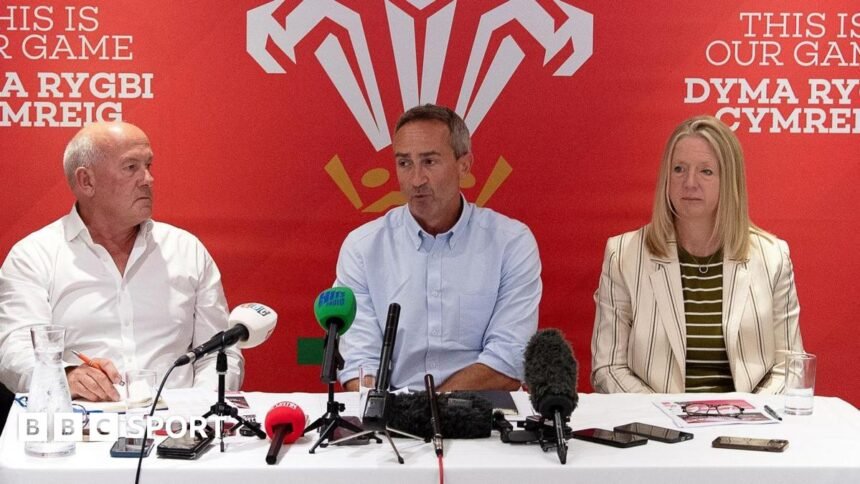The WRU has put three other proposals forward in addition to its “optimal solution”.
Model A is four clubs with unequal funding – two elite sides with a budget of £6.7m and two developmental clubs on £5.2m.
Models B and C would see four cut down to three, with B featuring equal funding of £6.9m and C having two elite clubs on £6.9m and a development side on £5.4m.
The preferred Model D would give the two clubs a playing budget of around £7.8m and increased squad sizes of 50 senior players, plus academy talent.
For comparison, England’s Prem Rugby salary cap is £7.8m per team each season, but that also allows extra funding for one marquee player per side, while France’s Top 14 sides are instructed to operate within a budget of £9.2m per season.
“We have put a clear vision out about where the future could lie,” said WRU director of rugby and elite performance Dave Reddin.
“We are asking people to let go of the past and the present and imagine a completely different future.”
The new models would involve the WRU funding all rugby operations, with private investors having responsibility for commercial operations.
The WRU also has the long-term ambition of building a national campus that would be the base for the two professional teams under its optimal system, plus the national teams and academies.
“The national campus would be a purposeful, collaborative space, a uniquely Welsh environment that other top-tier nations would find difficult to replicate,” said Reddin.







